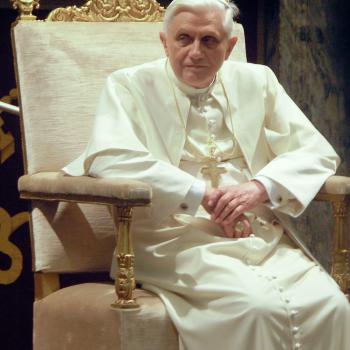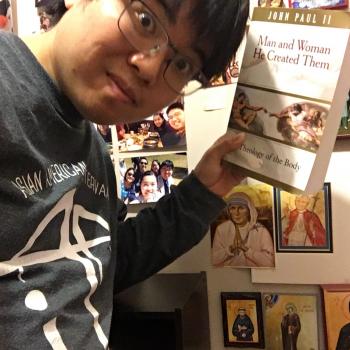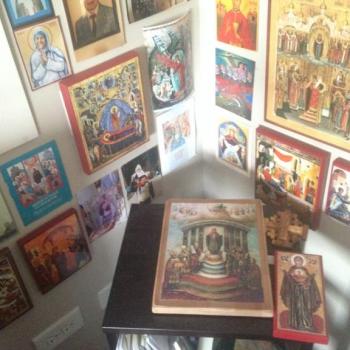One of the things that has annoyed me the most about the recent pope coverage are stories that portray religion as being in competition. These stories are annoying because they seem to be more about the journalists’ assumptions than about what’s actually going on.
Take, for example, Time Magazine‘s recent story on why a Latin American pope was elected. By now, I’m sure we’ve all heard that Latin American Catholicism, which once held a monopoly on Christianity in the region, is experiencing a high attrition rate to secularizing trends and Pentecostal movements. As a board of trustees of sorts, the cardinals (it’s supposed) thought that it would be in the interest of Catholicism to bring on a Latin American pope to get the kids back. Never mind, of course, that this pope drinks maté with evangelist Luis Palau, his evangelical CFO, and his good Anglican primate friend George Venables, as well as plenty of evangelicals and Pentecostals we probably haven’t found out about. There can’t be any collaboration because these religious movements are obviously in competition with each other. The election of Pope Francis is a checkmate of sorts.
Or take the comparative portrayals between Pope Francis and his predecessor, Pope Emeritus Benedict XVI. The New York Times portrays Francis as the simpler one–the one who rides the bus, cooks his own meals, connects with the poor–unlike the heady, scholarly Benedict with the red prada shoes and ermine-lined coats. It’s as if Francis were winning some humility competition. What happened to Benedict’s “simple, humble worker in the vineyard of the Lord“? Does the press remember that the first elected pope to say, “May God forgive you for what you have done,” was not Francis, but John Paul I? Does anyone remember how self-deprecating John XXIII was, particularly about his enormous weight? Can’t the popes just be different characters? Why does it have to be a humility contest? (Don’t believe me: go read Jesuit Fr. Jim Martin‘s fantastically funny Between Heaven and Mirth for the scoop on all of these humble, non-competitive characters.)
Or, in pre-conclave news, try the Huffington Post’s endless comparisons among all the papabili. Yes, there was some excellent coverage by those who really were in the know; by now, everyone knows that John Allen, Jr. is outstanding. But for most of those not in the know, it was short-lists and long-lists, job descriptions, management criteria, and action plans. There was also an affirmative-action, equal-opportunity employment clause, for Third World popes were favoured, though this was risky because they obviously come from backward cultures that are patriarchal and homophobic (an insidious assumption that seems to be a perennial problem in how administrators actually implement affirmative action). Pope Francis proved them right, of course: he had the image, he had the background, but he also had the “medieval” views on same-sex marriage too.
It has been well noted that the media always reports with a bias. Pope Emeritus Benedict XVI even went as far as to accuse the media of creating a “council of the media” with the Second Vatican Council, imposing their own agendas on the proceedings without caring about what was actually going on.
But I disagree with the social conservatives who accuse the news media of having left-liberal leanings. There is nothing left-liberal about being obsessed with competition.
It is simply a liberal bias. Put better, it is a market bias.
It’s the assumption that the Church works like the market and that religious groups are in marketized, brand-name competition. The trouble with Time Magazine is that it thinks that the Catholic brand is in competition in a religious marketplace with secular and Pentecostal brands. The New York Times is interested in which pope reflects a better corporate image. The comparisons among the papabili treated the cardinals as job candidates for a CEO position. The hierarchy in all of these models is a chain of command of employees, the laity are religious consumers, and non-Catholics are targets of a marketing scheme called the New Evangelization.
This is not the tyranny of the “left-liberal.” “Left” does not imply “liberal.” In fact, in some cases, “left” can be quite Marxist and anti-liberal. “Liberal,” after all, just means “free.” In its classical sense, that freedom is usually applied to the market and the private sphere, arenas of life in which the government shouldn’t intervene, at least according to classical liberal theory. The bias here is thus not “left liberal.” It’s the tyranny of the simply liberal, the classically liberal, the liberalism in which everything is part of the free market, the version of liberalism that, in American terms, the Republican Party would be happy to wear on its sleeves. (I’m sure that TIME, the NYTimes, and HuffPost would get a kick out of that assessment.)
The real question is, then, are we able to move our conversations about religion out of the market?










